How to Save Money on Homegrown Garden Stakes
Are you tired of buying bamboo stakes, metal posts, and other supports for your garden? Whether you wish to put up a trellis, fencing for keeping rabbits out, or keep your tomato cages from toppling over, here are some ways to save money by growing your own garden stakes. You might grow your own bamboo, use trimmed branches, or try ‘coppicing’ trees to create your own homegrown garden stakes.
Growing up on a farm helped me learn to make do with what we had on hand and utilize free resources growing on our property. Even though we only have a small homestead, I still put these techniques to good use!
Growing Bamboo for Garden Stakes
Bamboo is a lovely fast-growing plant that is native to Asia. It’s strong, holds up well in the garden, and is also very versatile. However, it can be invasive and some gardeners regret the day they planted bamboo in their yard. If you have space and live in the right growing zone, bamboo might be worth considering. Keep in mind that it can take over your yard and it may not be native to your area.
If you inherited a stand of bamboo or you have a neighbor with some growing in their yard, cut it back to the ground to use for creating your own garden stakes, a trellis, or even some privacy fencing.
If you don’t have a lot of space, I recommend giving bamboo a pass and considering an alternative.
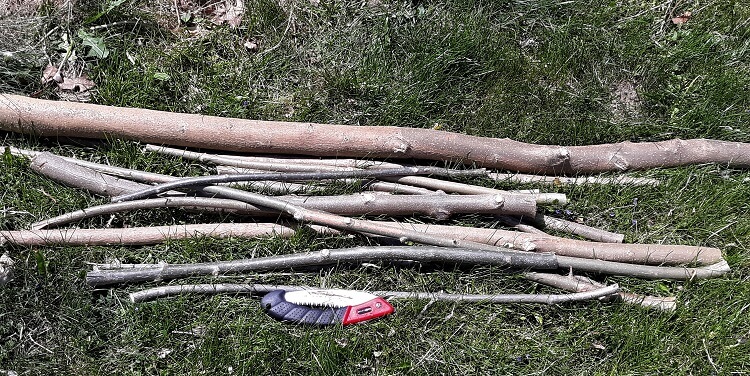
Pruning, Coppicing, and Pollarding Trees
If you have trees in your yard that need regular pruning, they might be a good resource for creating your own garden supports. Trim back branches that grow too close to your home or sidewalk or are shading your garden. Consider purchasing a pole saw to prune branches as a safer alternative to climbing a ladder.
Another option is to use a technique called ‘coppicing’ to grow a regular harvest of garden stakes. This method of tree pruning takes advantage of some tree species’ ability to grow many new stems from their stump after the tree is cut down.
To coppice a tree you will cut the tree down to a stump and allow the growth to reach the size you need. After one or two years you’ll have flexible growth that is good for creating wattle fencing or stakes for small plants. For sturdier branches, allow the new growth a bit thicker before cutting it back.
Coppicing is similar to a technique called ‘pollarding.’ The difference between these methods is where you cut the tree trunk. If you cut the tree down to a stump, it is coppicing. If you cut it off at head height or higher, it is called pollarding. Either of these pruning techniques may be used to force new growth below the cutting point.
The tree should continue to produce new sprouts each time you cut these branches back. This provides a continual harvest of garden stakes, trellis material, or other flexible wooden rods for crafts and woodworking. To reduce stress on the tree, only remove one-half of the new growth each year.
Best Trees for Coppicing or Pollarding
Some species of trees and woody shrubs that work well for this pruning technique are:
- Ash
- Silver maple
- Arrowwood viburnum
- Boxelder
- Willow
- Sycamore
Of course, coppicing trees leaves a short stump in your yard that may not fit in with the landscape design. Use this method to create a living hedge that is harvested every second or third year for raw materials. If you remove a large tree, consider leaving the stump as a source of garden stakes and other materials. Or pollard a large tree to keep it from taking over your yard and use the branches for your projects.
Trees You Should NOT Harvest for Garden Use
There are two species of trees that don’t work well for making your own garden stakes. Don’t use black walnut or butternut trees because these trees contain a chemical called juglone that is toxic to many plants.
You also don’t want to chip the branches of these trees into mulch and use them in your garden.
Put a Point on Your Stakes
Once you have a nice haul of branches, you’ll need to turn them into garden stakes by sharpening one end. This allows you to pound the pointed end into the ground for a firm anchor to support plants or fencing. You may also remove small side branches and leaves for a cleaner-looking stake.
Small branches may be whittled into shape with a sharp knife, while larger ones may require a hatchet or axe. I cut my branches with a pruning saw and then created a pointed end with an axe. In either case, you’ll need to be very careful not to cut yourself as you whittle and shape the wood. If you are using an axe or hatchet, place the end of the post onto a stable chunk of wood (such as a tree stump or short log). Carefully chop small bits of wood off the end of your branch until you have a crude point. Always hold the stake with your hand high enough that you won’t chop your fingers off with the hatchet!
Can You Grow Your Own Garden Stakes?
If your property is very small these ideas might not work for your situation. However, if you have a little bit of space it’s possible to include a few tree species that may be coppiced for new growth. Growing bamboo is another option if you have the right climate and some room to spare. Some people grow bamboo in large containers for a decorative element in their garden without the potential for invasive growth.
Before you begin trimming trees, make sure there aren’t any birds nesting and raising young in the branches. You don’t want to inadvertently kill the nestlings as you’re harvesting your homegrown garden stakes. Always keep safety in mind and don’t fell large trees without help if you have never done this before!
As an Amazon affiliate, I earn a commission on qualifying purchases.

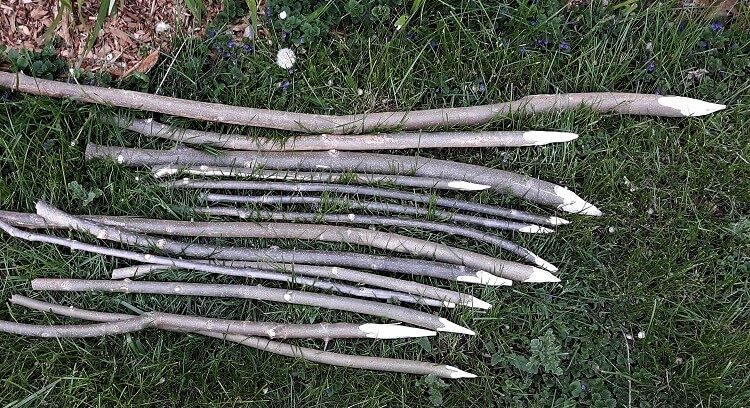

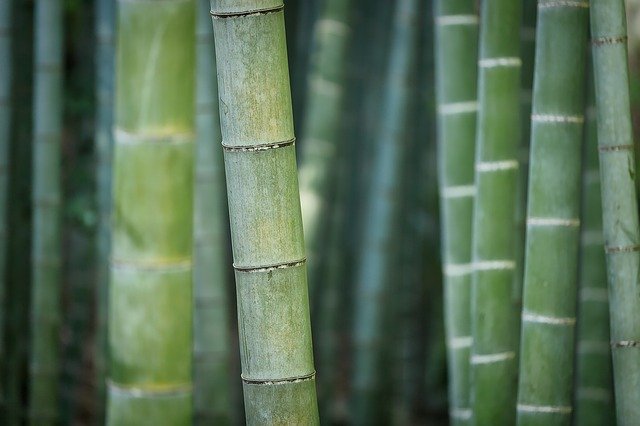
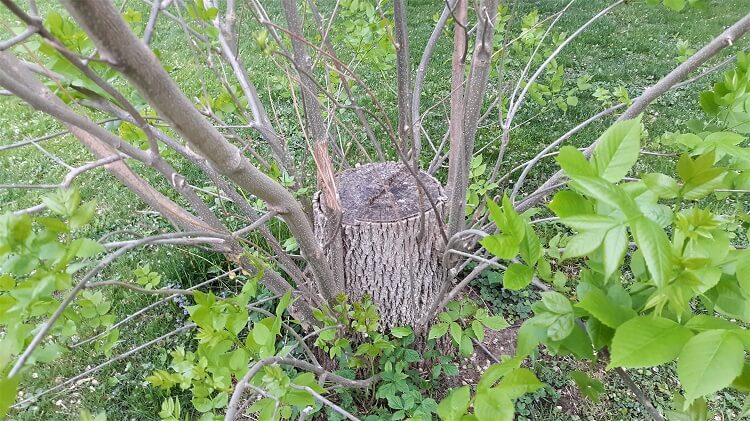


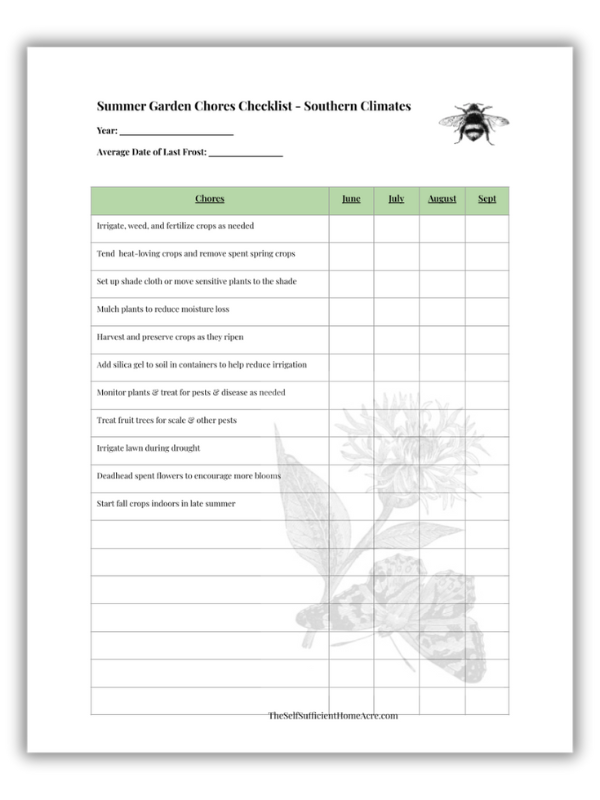

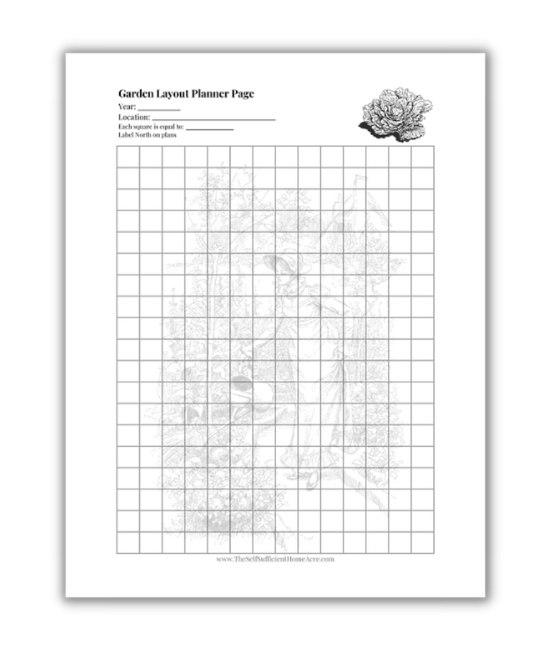

Well that is a smart idea. I’m new to your blog and I’m loving it, there’s so much to read and learn. Thanks.
Welcome, Jennifer! And thank you!
Lisa, once again, I’ve learned some interesting facts. I didn’t know about pollarding and coppicing. And I had no idea that black walnut should not be chipped. I’m going to see if my husband knows that, since he chips pretty much every kind of tree.
Thanks for bringing your post to the Homestead Blog Hop
Have a good week!
Laurie
Thanks so much for stopping by, Laurie! Yes, black walnut trees can kill some plants. There are other plants that do well around them. But I try to keep the leaves and chips away from the garden and fruit trees.